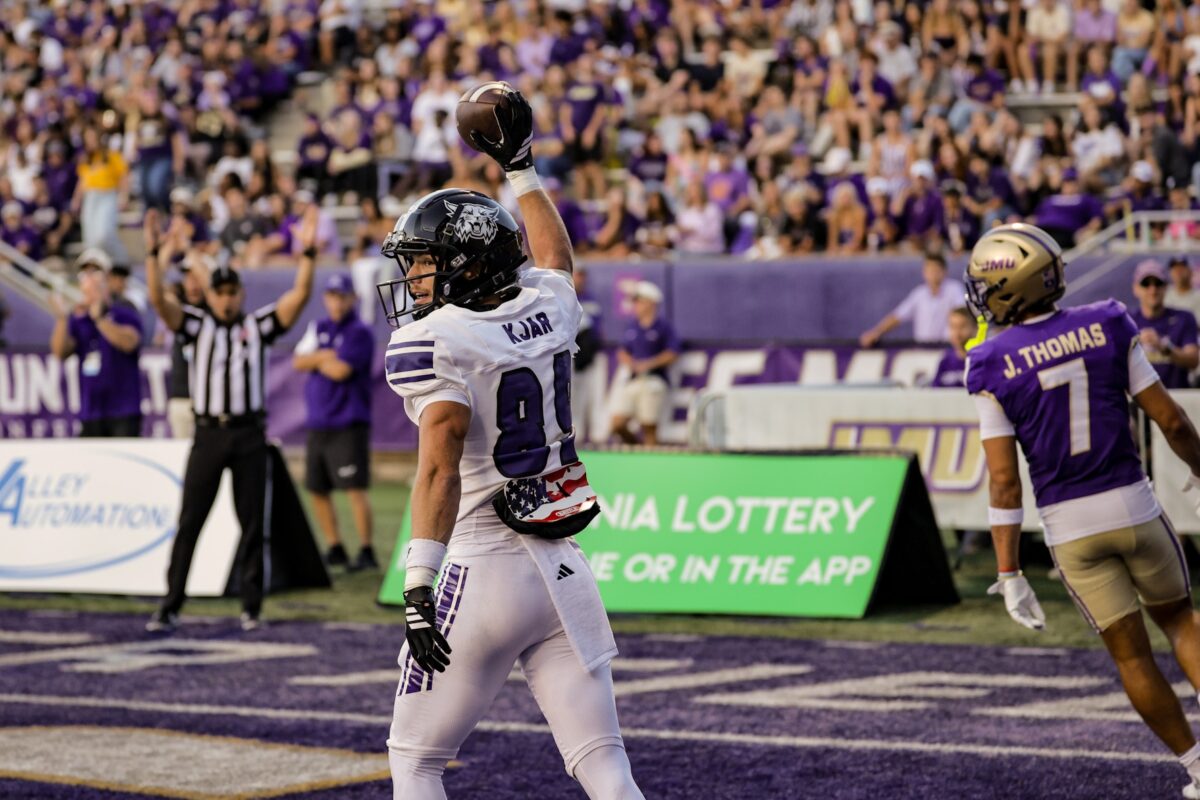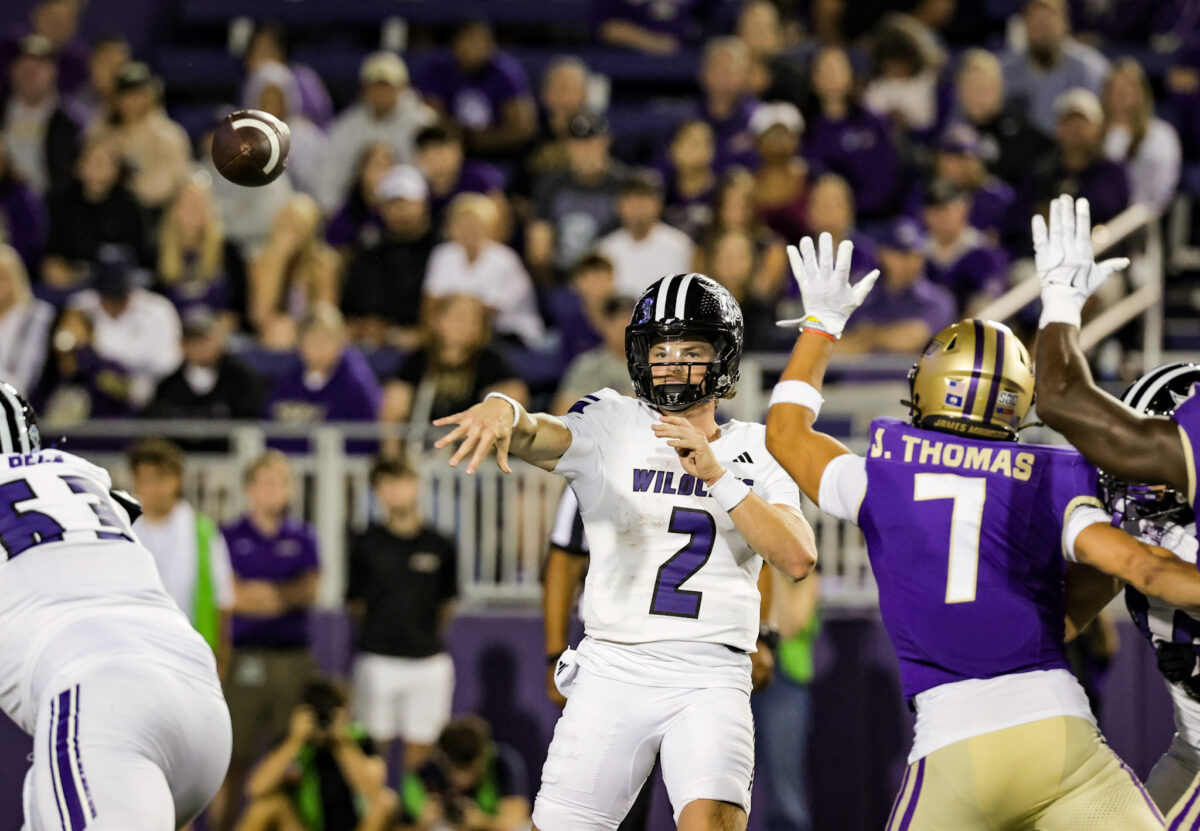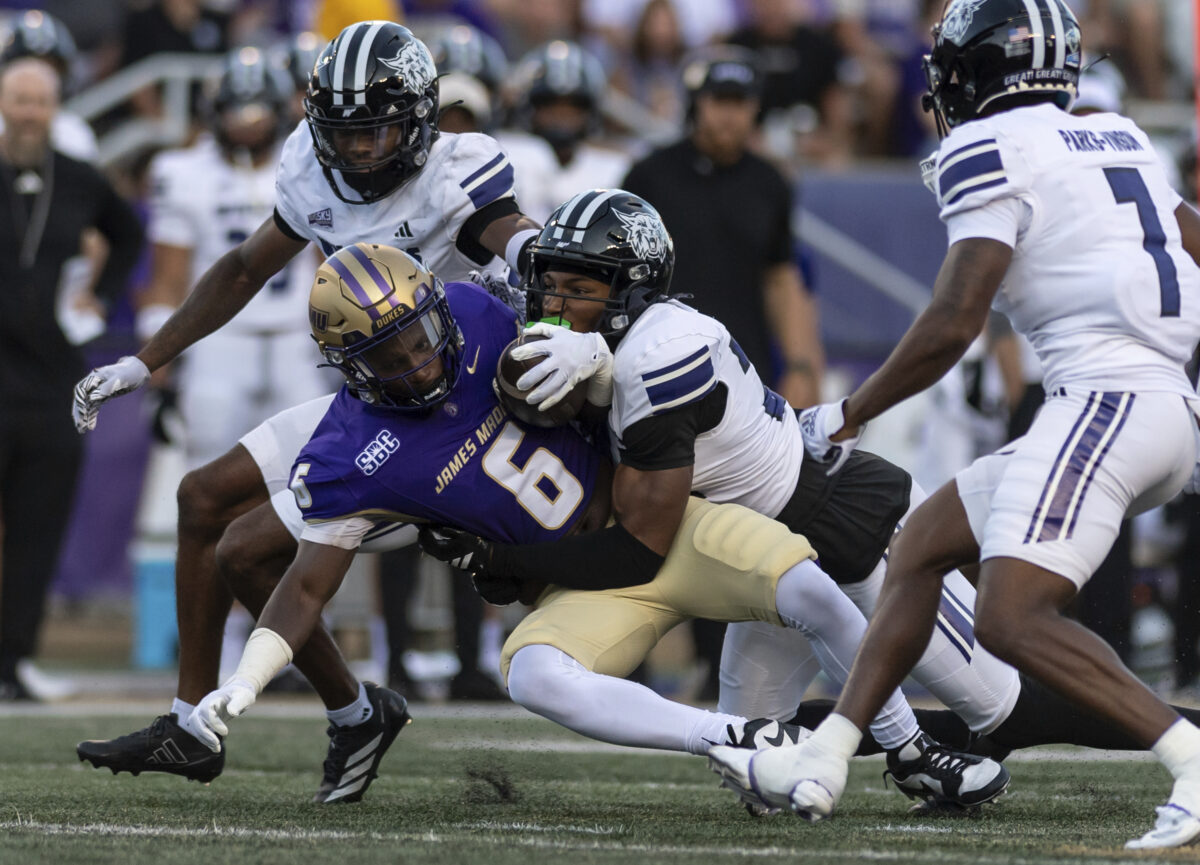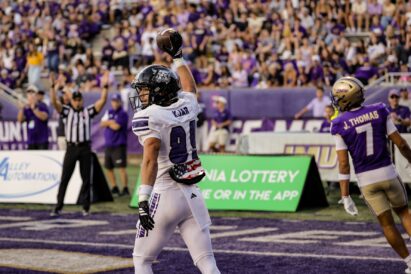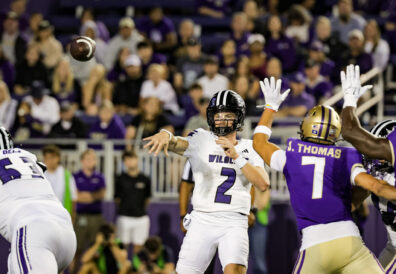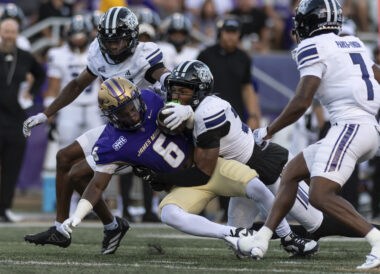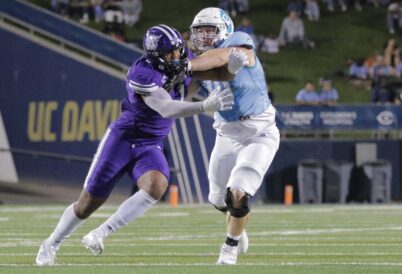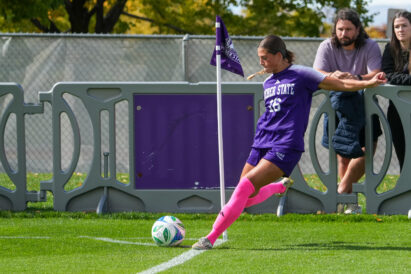The good and bad from Weber State football’s opening loss at James Madison
- Weber State receiver Noah Kjar (89) celebrates his touchdown reception against James Madison on Saturday, Aug. 30, 2025, in Harrisonburg, Va.
- Weber State quarterback Jackson Gilkey (2) throws a pass past James Madison safety Jacob Thomas (7) on Saturday, Aug. 30, 2025, in Harrisonburg, Va.
- James Madison running back George Pettaway (6) is tackled by Weber State safety Angel King (24) during the first half of an NCAA college football game on Saturday, Aug. 30, 2025, in Harrisonburg, Va.
James Madison scored touchdowns on its first four possessions Saturday against Weber State and ultimately covered the spread with a 45-10 victory.
So it’s not as if the Wildcats claimed any huge triumph in the loss (though, according to JMU’s broadcast, the Dukes average a 46-5 win in season openers since 2020 and no opponent has scored more than 10; two of those opponents were FBS, three were FCS).
But in a game WSU would be obviously overmatched against an FBS team predicted to win its conference, there are some details to scrutinize and see if the Wildcats seem to be making progress from last season’s 4-8 record.
The results are mixed, but some elements are encouraging.
First, there was plenty of room for improvement. Much of the most noticeable items lie with Weber State’s special teams units.
Henry Way had one punt blocked that led to an easy JMU touchdown that all but buried the Wildcats at 28-0. Head coach Mickey Mental said this was a blocking issue on the back side that needs to be corrected. Way kicked away a couple more under pressure — though, one positive there: Way is another footballing Australian and his first day in Ogden was the first day of call camp; he generally handled the pressure well in his first game in front of a sellout road crowd.
Weber had three kickoffs on the night and one of them left a lot to be desired. Coming right after Aizik Mahuka’s force fumble led to Jackson Gilkey passing to Noah Kjar for a touchdown, the Wildcats surrendered a 97-yard kick-return touchdown to JMU’s Wayne Knight.
The play was correctly called back on a holding penalty around the 15, but it ultimately didn’t have a huge impact on the run. The Wildcats filtered Knight to the sideline and had a pile of defenders nearby, any one of which should have got hands on Knight at least enough to nudge him out of bounds near midfield. Instead, Knight churned through the traffic on the way to a score. WSU was fairly lucky to escape that one.
In other special teams concerns, WSU’s kick-return game was ineffective. Kjar averaged 17 yards on six returns, with a long of just 19. Weber State’s starting field positions on deep kicks to Kjar came at the 12, 19, 9, 27, 17 and 19.
In short, kick-return blocking schemes did not hold up — and WSU should have at least thought about fair catches for starts at the 25 after the first three returns. Confidence in Kjar is fine, but perhaps strategies could have shifted.
Struggles against the run were at least somewhat understandable given the opponent and who Weber State was missing — linebackers Sione Hala, Aidan O’Callaghan and Raimoana Tinirauarii did not make the trip — but giving up 7.1 yards per carry and 313 rushing yards is obviously not going to work. It’s fair to note that JMU had Alonza Barnett III and Matthew Sluka at quarterback both providing enough run threat to make things pretty difficult (they totaled 60 yards and two touchdowns on 11 carries).
Weber’s run game didn’t quite work on the other side, either. Run plays for Davion Godley and especially Bird Butler (he was negative-13 on three carries) were not effective; Gilkey was hit or miss with a few impactful runs. That definitely made things hard on Gilkey in the pass game.
But, one bright spot came for Zach Hrbacek. The senior transfer from Sam Houston State seemed to earn more carries going forward with his tough, smart running (and a style that seems to give variety to Godley’s style).
With 13 minutes left in the game, WSU was averaging 1.2 yards per carry. From that point, Hrbacek took eight carries for 32 yards (an average of 4 per carry) and seemed to find the tough yards others couldn’t. Early in the third, Hrbacek made a great cut to avoid a JMU defender in the backfield, turning a near loss of 2 into a 4-yard rush, which set up Sloan Calder’s 51-yard field goal. Hrbacek finished with 12 carries for 39 yards.
Gilkey was a bright spot, too. Having not played a game in three years, his vision of the field and general feel/command was noticeable. He mostly made good decisions, despite how the lack of a run game made it tough to get the passing game going.
Yes, Gilkey threw three interceptions. But JMU forced 17 interceptions and 29 total turnovers last season, they’re pretty good at it. Only one was from a bad decision that he owns (that decision gave JMU a 5-yard field, though, for an easy touchdown). One pick came on a deflected pass and another on a Kjar drop that likely turns into a big reception later in the year with more chemistry between them.
Other notable positives came in ways Weber State really struggled last season: creating turnovers, red-zone offense (and taking advantage of opportunities), and penalties.
JMU gave up only nine turnovers last season. So it’s notable that — with the same QB as last season in Barnett, and adding in a dual-threat talent like Sluka — Weber State gained two turnovers (one fumble and one interception) against James Madison. WSU only forced nine turnovers last season, too, so two in the opener is progress.
Mahuka’s forced fumble was opportunistic and gave Weber State its only red-zone chance of the night. From the JMU 21, last year’s team probably would’ve run five or six plays and any outcome (TD, settling for a FG, turnover on downs) was just as likely as another. Saturday, WSU ran two plays: a Gilkey 7-yard run, and the Gilkey-to-Kjar touchdown.
The defensive sequence that saw a BJ Carey TFL, an Ishaan Daniels sack and Logan Mackey sniffing out a fake punt gave Weber a 38-yard field. Not picking up a first down isn’t progress, but WSU at least cashed in the opportunity with Calder’s 51-yard field goal.
Overall, that’s progress.
And, penalties. No Big Sky team logged more penalty yards per game last season than Weber State (6.75 penalties for 59.6 yards per game) — tons of false starts and holding penalties that killed drives, and a good share of personal fouls or other 15-yarders that gave too much help to opponents.
Saturday at JMU, Weber State had three penalties for 22 yards: an Ishaan Daniels pass interference, a blindside block on freshman David Brinton during a kick return, and a false start assessed to Cole Casto.
Time will tell if struggles had to do with the quality of the opponent, or if run and third-down defense still pose a problem (for what it’s worth, JMU was 5 of 6 on third downs in the first half but 2 of 7 in the second half).
And, time will tell if seeming improvements are glimpses of better things to come.

